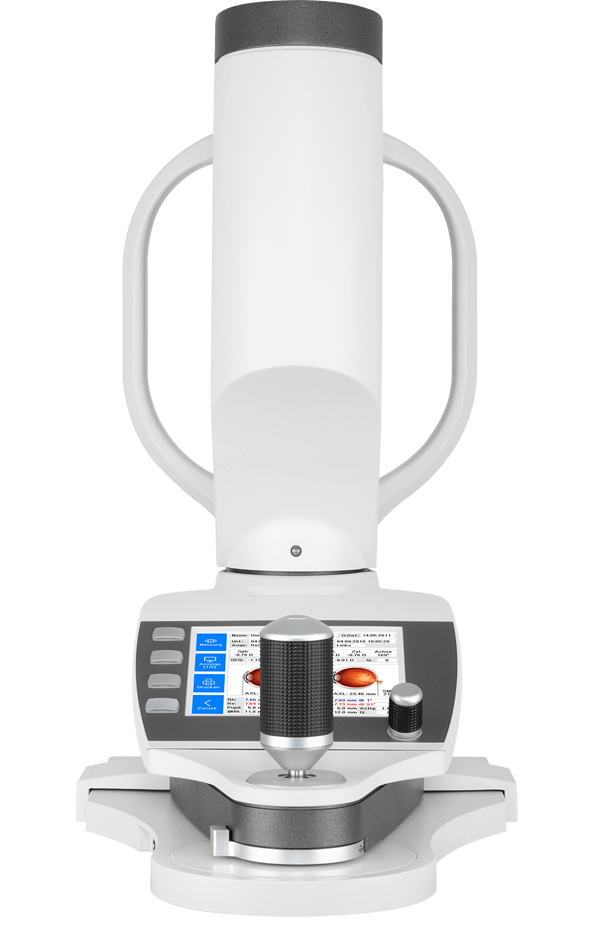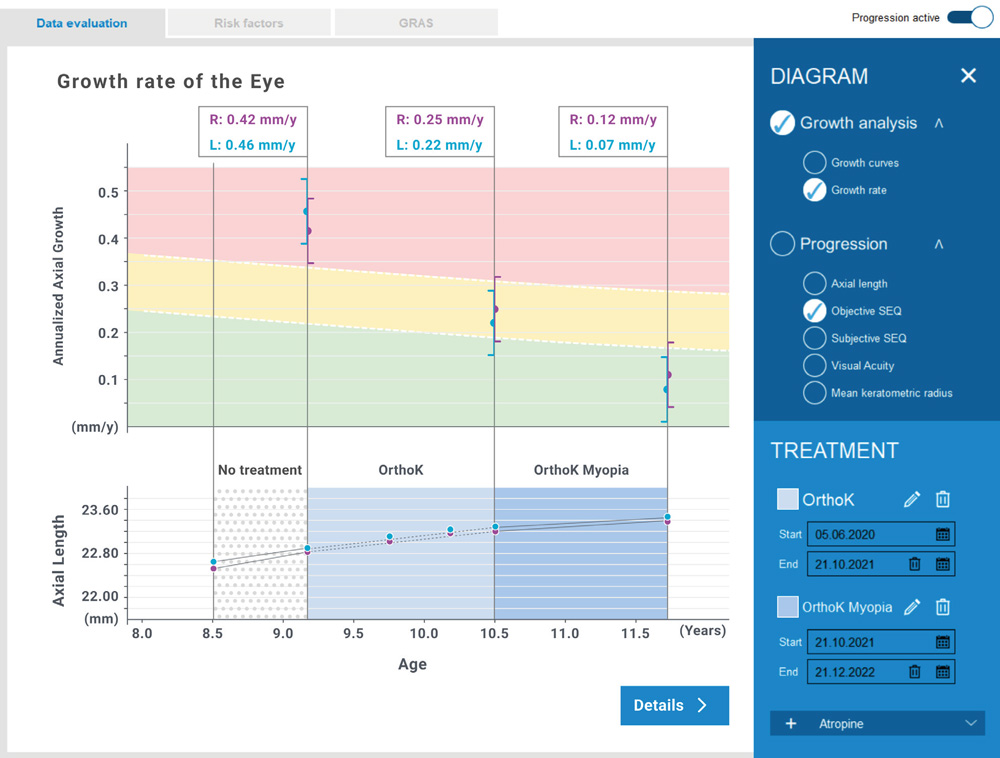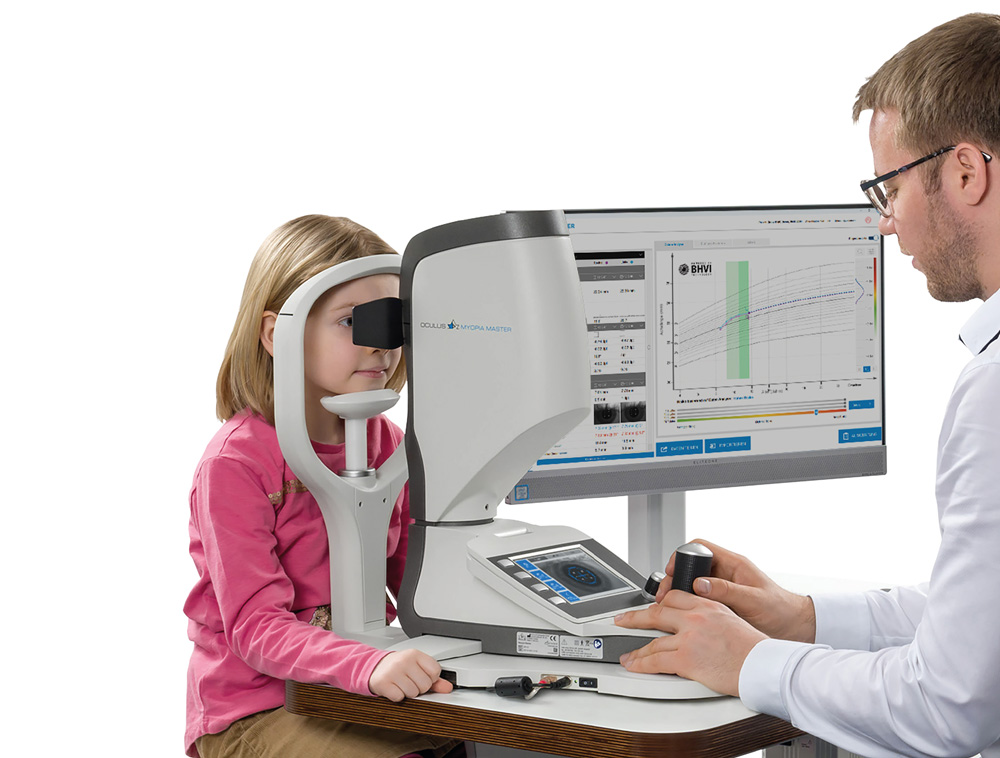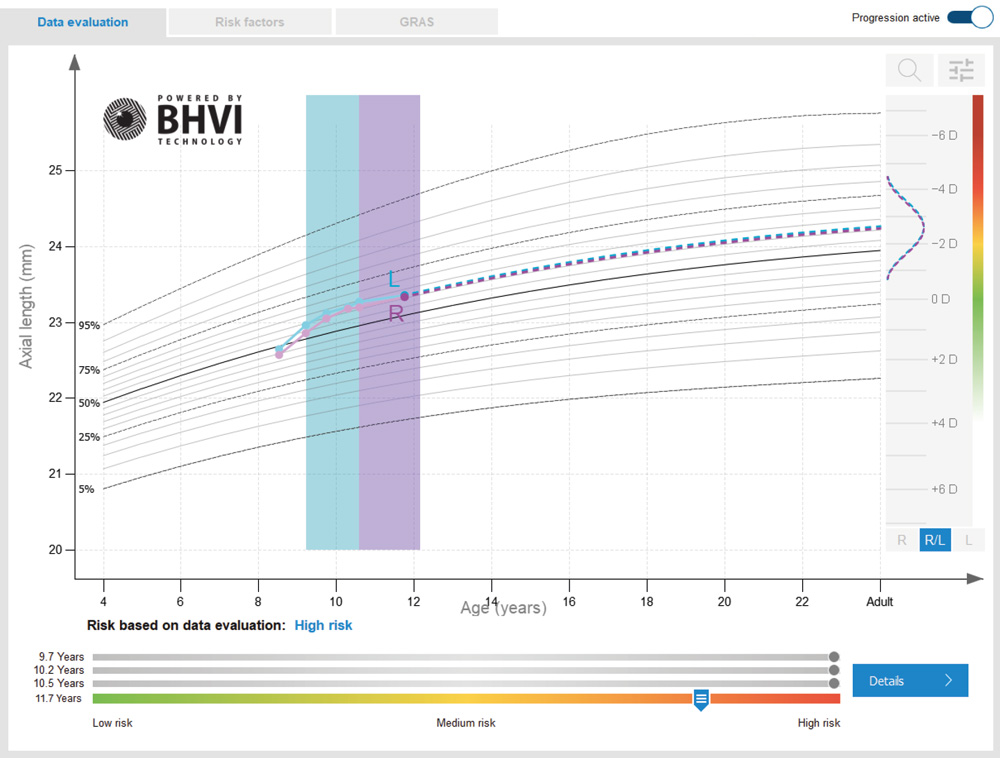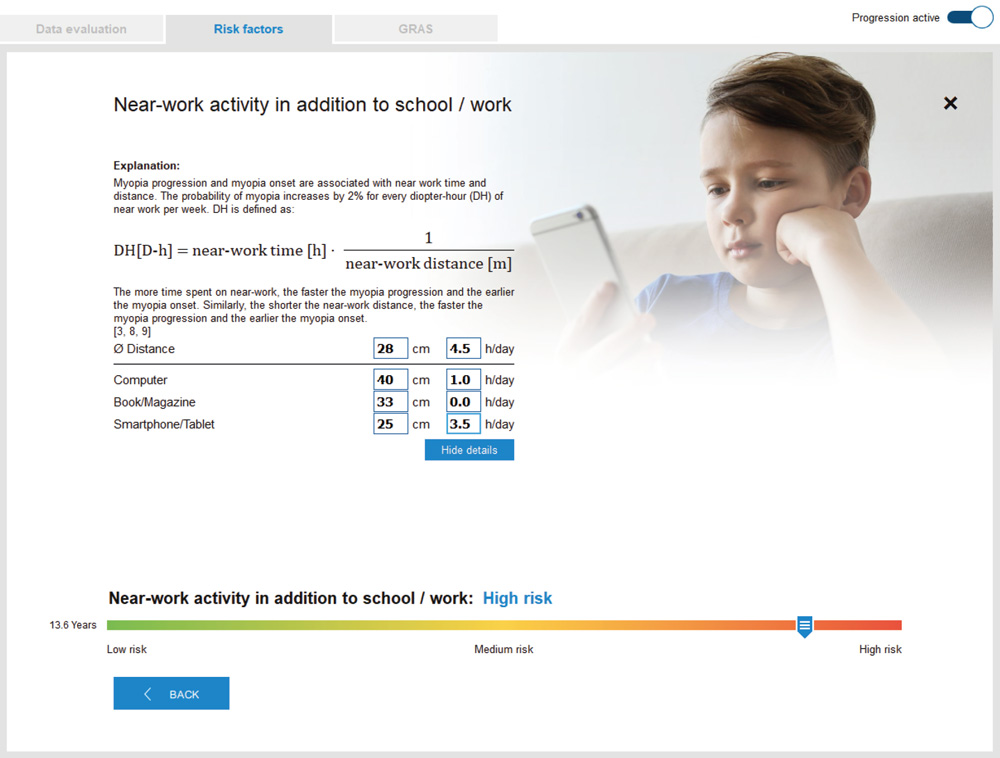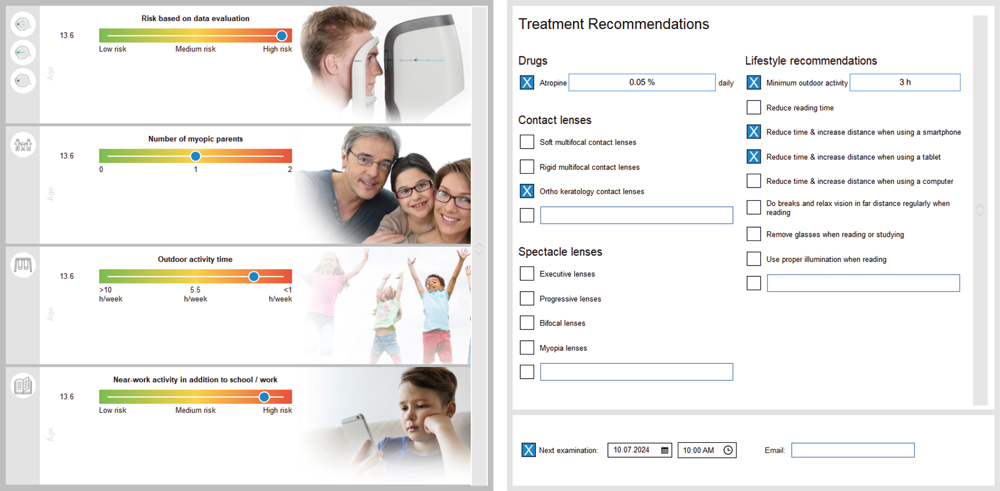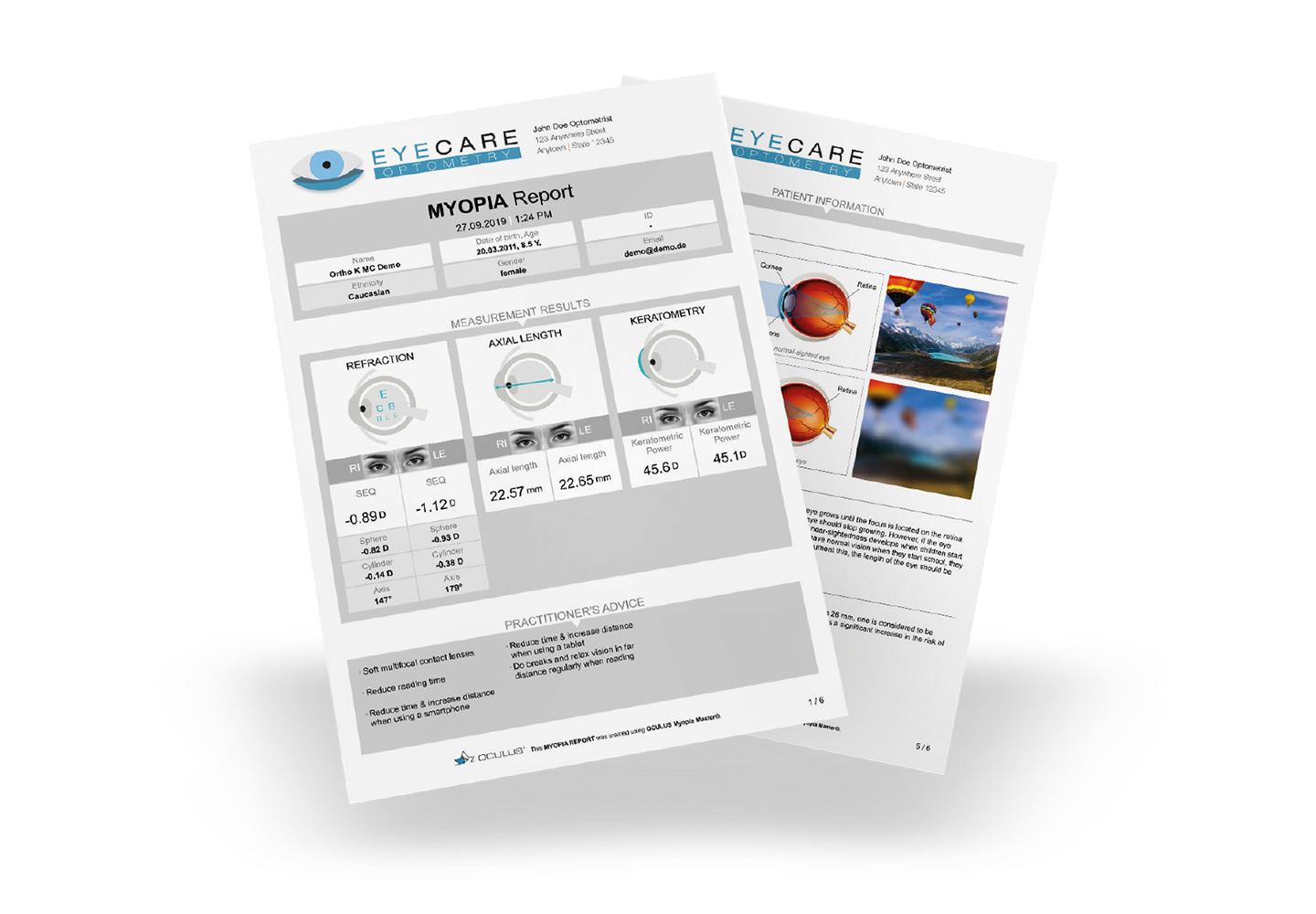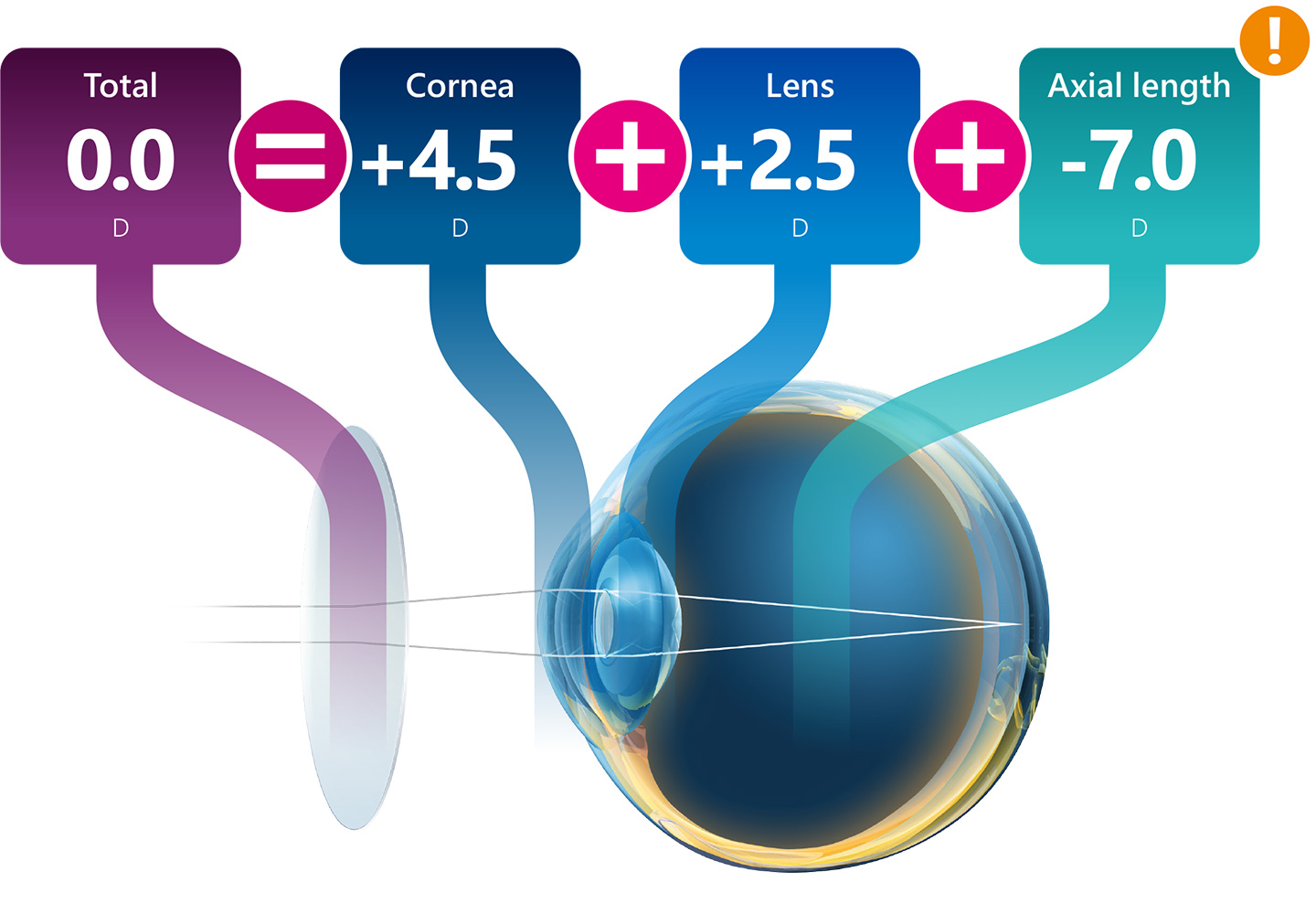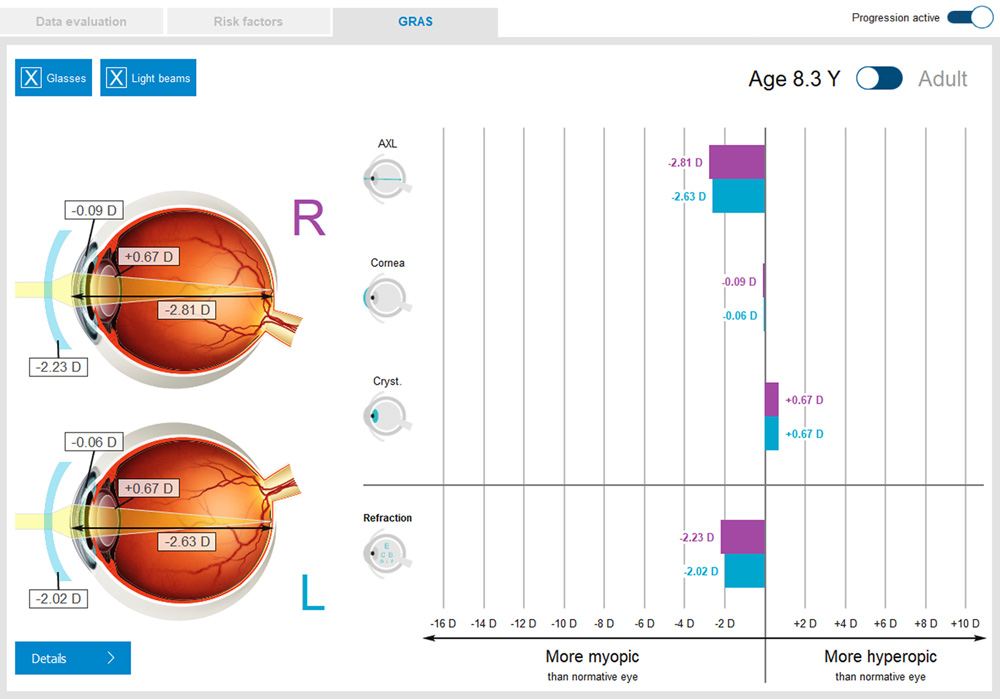Master Myopia in future!
Early and accurate measurement and reliable follow-up of myopia
With myopia prevalence increasing in children, adolescents and young adults and growing exponentially overall, it is becoming more and more important to monitor for myopia early on in life. Simply put: The earlier myopia is discovered, the better. Children should therefore be regularly tested for myopia from the age of 4.
The greatest changes in myopia occur from age 6 to 16 when the eye can start growing out of focus. This results into a bigger axial length of the eye and myopia. Once the eye is grown longer, there is no method shrinking the eye again. The treatment of myopia reduces the eye growth, or, in the best case, stops it. This demonstrates how important it is to regularly test children already at an early age.
Myopia management: All important parameters in one device
Refraction, Axial Length and Keratometry
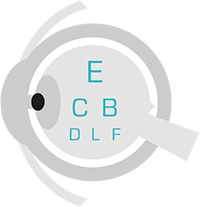
Refraction
A refraction measurement is carried out in a matter of seconds and determines the eye’s refractive error. The sphero-cylindrical combination forms both the basis for subjective refraction and is also a fundamental parameter for myopia management.
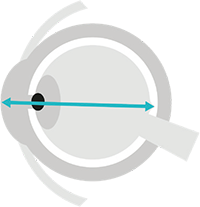
Axial length
The axial length measurement is independent of the accommodation state of the eye. The measurement is highly accurate. An increase in axial length is a reliable indication of myopia progression. Axial length measurement represents the gold standard for recognizing eye length growth at an early stage.
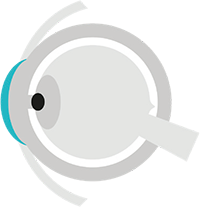
Keratometry
The central corneal radii represent the refraction of the cornea. Combining this with the axial length and the total refraction of the eye enables an even better understanding of the human visual system.
NEW: Growth Analysis
Keeping an eye on eye growth
Regular eye growth checks are an essential aspect of successful myopia management. This illustration clearly shows the changes in eye growth as well as treatment successes.
The Growth Analysis module automatically calculates and visually compares a patient’s axial length growth rate with age-adjusted normative data, facilitating streamlined clinical decisions and discussions with patients and their parents. The colour-coded parameters support practitioners in tracking and communicating the effectiveness of each myopia treatment, helping to achieve buy-in and reinforce compliance.
Based on a quantitative analysis of these clinically significant measurements, practitioners can evaluate treatment efficacy to validate success or adjust recommendations with greater speed, ease and accuracy for improved workflow.
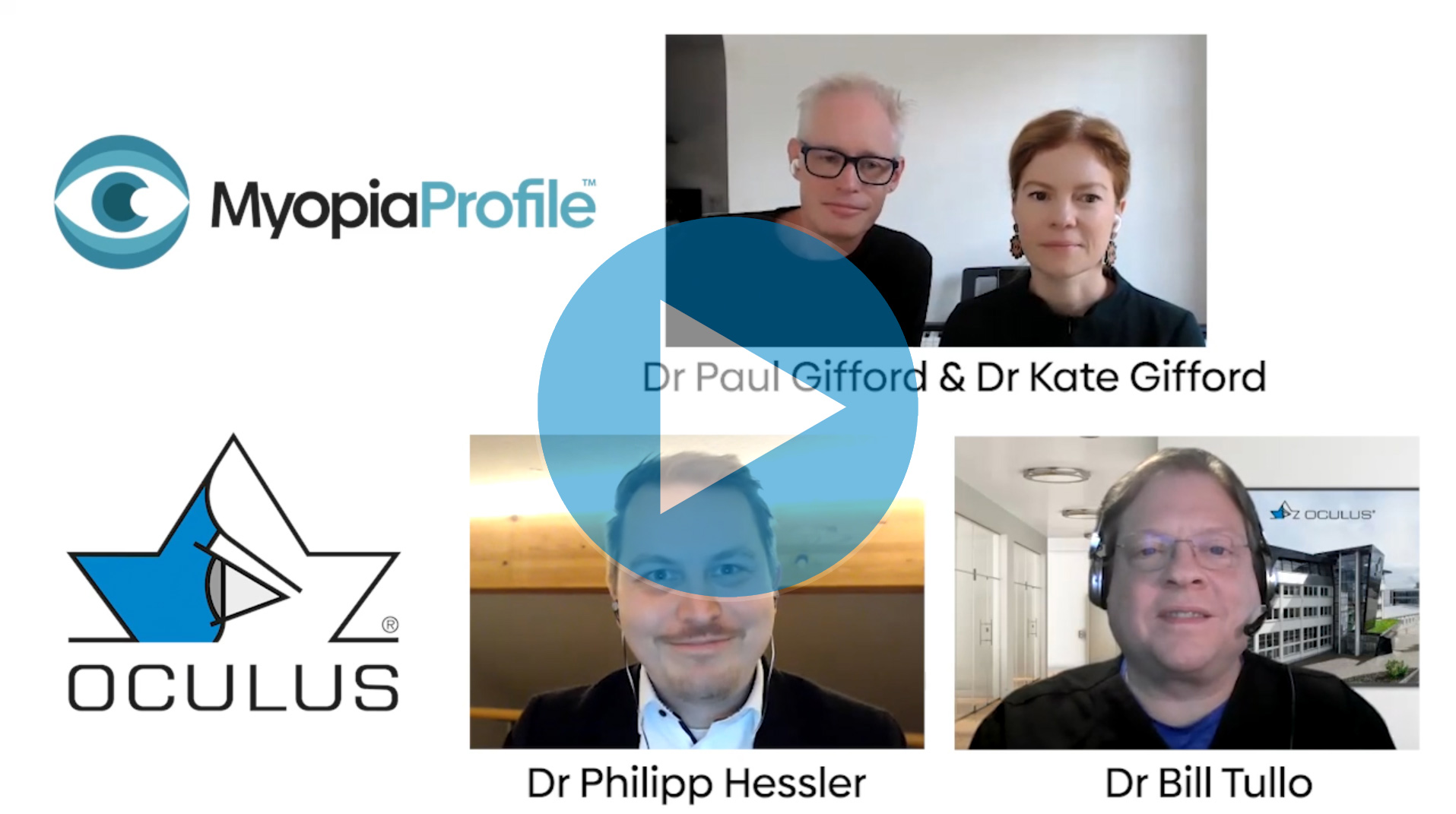
Expert Interview on the Myopia Master® New Growth Control Module’s Clinical Applications
Dr. Philipp Hessler & Dr. Bill Tullo Interviewed by Dr. Paul Gifford & Dr. Kate Gifford from the Myopia Profile™
All you need in 5 steps
Myopia management made easy and professional
Measurement
All key data with just one measurement process (measurement of axial length, refraction, keratometry)
Data Analysis
Growth curves from the BHVI make data interpretation easier
Risk Identification
Questionnaire on environmental conditions and patient education
Myopia Report
Evaluation-based treatment recommendations to provide a clear list for the patient
NEW: Growth Analysis
For visible treatment success
Measurement
One measurement process, three parameters
Refraction, axial length, and keratometry are the main measures required for professional myopia management, but only in combination do they allow for individualized treatment and counselling.
Benefit from the unique measurement combination.

Data Analysis
Results interpreted on the basis of BHVI growth curves
The patient data is compared with age and genderdependent growth curves collected from more than 20,000 eyes. Exclusive algorithms from the Brien Holden Vision Institute (BHVI) now make interpreting the data easier than ever.
Benefit from an extensive database.
- Normative growth curves by ethnicity and gender.
- Measurement data predicting axial length and refraction in adulthood of the right (R) and left (L) eye.
- Colour coding of the treatment.
- Individual risk evaluation based on data analysis.
Risk Identification
Environmental conditions and patient education
The Myopia Master® software provides a default questionnaire addressing the most important risk factors. Further risk factors can be added and customized using the Question Kit.
All information is based on peer-reviewed papers.
The Myopia Master® software assists the eye specialist in educating children and their parents.
Benefit from the questionnaire or create your own.
- Detailed explanation of risk factor.
- Literature sources pop up on hovering.
- Prolonged near work predisposes to myopia.
- Colour scale for fast risk identification.
Myopia Report
Evaluation-based treatment recommendations
Based on an evaluation of the questionnaire the eye specialist can select the appropriate treatment with a simple click or enter a personalized treatment. The Myopia Report for parents and children can then be sent to the patient by email or printed out together with the next examination appointment.
All of the results are clearly listed in the Myopia Report, which helps readers to understand their individual outcome.
Benefit from easy-to-understand material.
- Overview of the results analysis.
- The digital Myopia Report can be sent by email or printed out together with the next examination appointment.
- Individual treatment recommendations on medication, contact lenses, spectacle lenses or lifestyle changes.
NEW Growth Analysis
Keeping an eye on eye growth
Regular eye growth checks are an essential aspect of successful myopia management. This illustration clearly shows the changes in eye growth as well as treatment successes.
Benefit from treatment and lifestyle recommendations.
- The annual growth rate is determined from the measurements within the displayed interval and shown in the upper graph.
- Treatments with Ortho-K and Ortho-K Myopia have demonstrated good and very good treatment results.
GRAS Module
Anything but 0.0. – A new understanding of vision
Never has the interpretation of measurement results been as easy and reliable as with the new Myopia Master®. All individually measured refractive components of the eye are automatically matched with the Gullstrand standard eye model. This way you can always take your bearings by the gold standard. Not only does this save you time, it also provides an ideal basis for explaining the results to your patients.
Best of all, OCULUS has adapted the Gullstrand eye for children, providing even better care for this important target group.
Comparison with the Gullstrand eye
The Gullstrand Refractive Analysis System or GRAS for short, is a refraction-analysis module that is optionally available with the Myopia Master®.
Comparison of individual optical components with the age-adjusted Gullstrand eye
- Simulation of the optical beam path with and without glasses
- Button for useful additional information about patient education
- Axial length
- Corneal power
- Crystalline lens power
The solution for the future:
The Myopia Master® from OCULUS
Previously there was no all-in-one device available for performing refraction, axial length measurement and keratometry in combination. The only option was to purchase at least two devices, but this still left one with no myopia software.
The Myopia Master® from OCULUS now enables optometrists and ophthalmologists to position themselves optimally for the future. The Myopia Master® combines the most important parameters, making myopia detection and management much easier and more reliable than ever.
Watch, Read and Listen to other Experts’ Experience in Myopia Management
– FREE Downloads!
Case Report
Myopia Case Report – New standard of care in children
With progressive myopia already experiencing an extreme increase over the past few years, this drastic situation is further fueled by the changing eye demands associated with the Covid-19 crisis. This Case Report shows how myopia management was performed in an 8-year-old exophoric patient.
DOWNLOAD PDFCase Report
Myopia Management with Orthokeratology
In myopia had been stated that avoid overcoming 26 mm of axial length or less of -6.00 D is of importance. Even more, if we know that every additional dioptre increases myopic maculopathy by 67 %. Today, orthokeratology (OK) is a gold standard for optical devices. Between them, Double Reservoir Lenses (DRL) easily allow customization, as changes in back optic zone diameter, for better myopia control in children.
DOWNLOAD PDFCase Report
Myopia management for pre-myopia
The increasing myopia prevalence opens a new field for optometry. Educating parents and kids about risk factors, monitoring regimen and treatment options is an ethical responsibility as well as a new task for preventive optometry to identify those at risk for developing axial elongation along with severe eye health issues later in life.
DOWNLOAD PDFCase Report
Alarming high myopia managed with multi focal contact lenses
Over the last years, myopia management has become a major focus in the practical work of many eye care specialists. Current management options typically involve contact lenses or atropine. This Case Report describes the approach taken in a pre-myopic patient.
DOWNLOAD PDFBest Practice
Operations with the Myopia Master
I was initially introduced to the OCULUS Myopia Master® in 2019 (in the UK) and I was very excited to try out this new device which would enable me to measure axial length, refraction and keratometry, all at the same time. Previously there was no all-in-one device available for performing refraction, axial length measurement and keratometry in combination.
DOWNLOAD PDF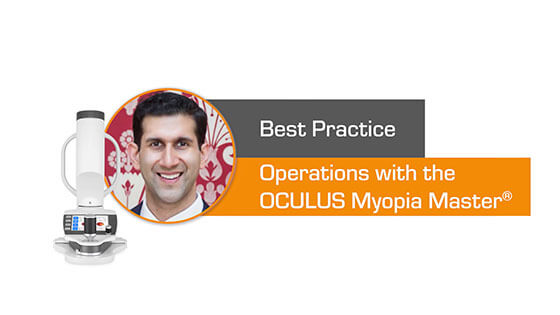
Interview
Professional myopia management in the eye clinic
Get a first-hand introduction to the myopia management routines of an ophthalmological practice. Dr Hakan Kaymak will walk you through a typical examination from start to finish, explaining what the essentials of a routine examination are and why good cooperation with optometrists is important.
Hear what the experts say
Myopia Management Is a Joke!
Dr Oliver Woo
Axial Length and Refractive Error in Myopia Management
Prof Padmaja Sankaridurg
Myopia Management Redefined
Philipp Hessler
Myopia risk
Myopia: short-sightedness in children and adolescents on the rise
When it comes to the spread of myopia some studies already speak of an epidemic. The well-known Brien Holden Vision Institute has forecast that by the year 2050 one out of two individuals could be affected by myopia. That is alarming, and it makes it more than clear that early detection and management of myopia are becoming more and more important. For there is no other way to effectively reduce the risks of myopia in children and adolescents.
Numbers speak a clear language
A comparison illustrates the rapidity of this development: In the year 2000 22.9% of the global population were affected by myopia and 2.7% had high myopia beyond -5 diopters. According to Brien Holden's forecast, by 2050, 50% of the world's population could be myopic and at least 10% could be suffering from high myopia. The development is also dramatic within Europe. According to data recently presented by the European Eye Epidemiology Consortium, more than 47% Europeans between 25 and 29 years of age are myopic
Risk of severe eye disease on the rise
Those affected also have a greater risk of developing severe eye disease such as cataract or retinal detachment and eventual blindness. In general it can be said, that the earlier the myopia onset, the higher will be the myopia in the adulthood and the higher will be the risk for severe eye disease.
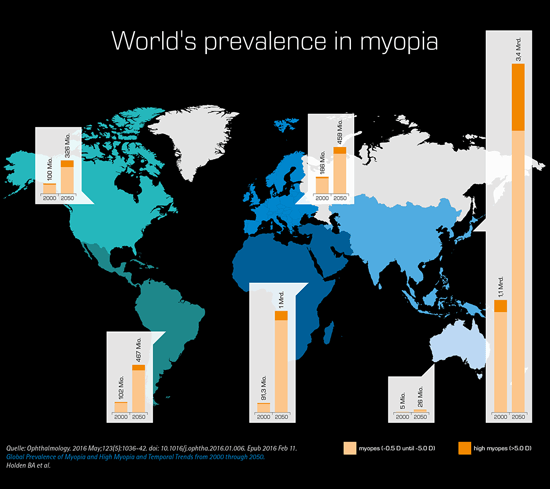
Click on the screen above to view a larger version.
Cooperations
Cooperation between OCULUS and IMI
OCULUS has joined the International Myopia Institute (IMI) in tackling myopia awareness and will support the IMI activities to advance the research of myopia to prevent future vision impairment and blindness.
The IMI is a global group of experts who have come together to discuss, debate and make available the latest evidence-based recommendations in classifications, patient management, and research, in the form of the IMI-Whitepapers, in up to twelve international languages.
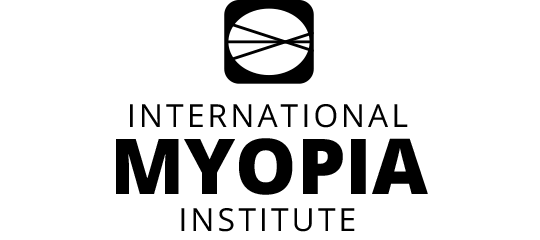
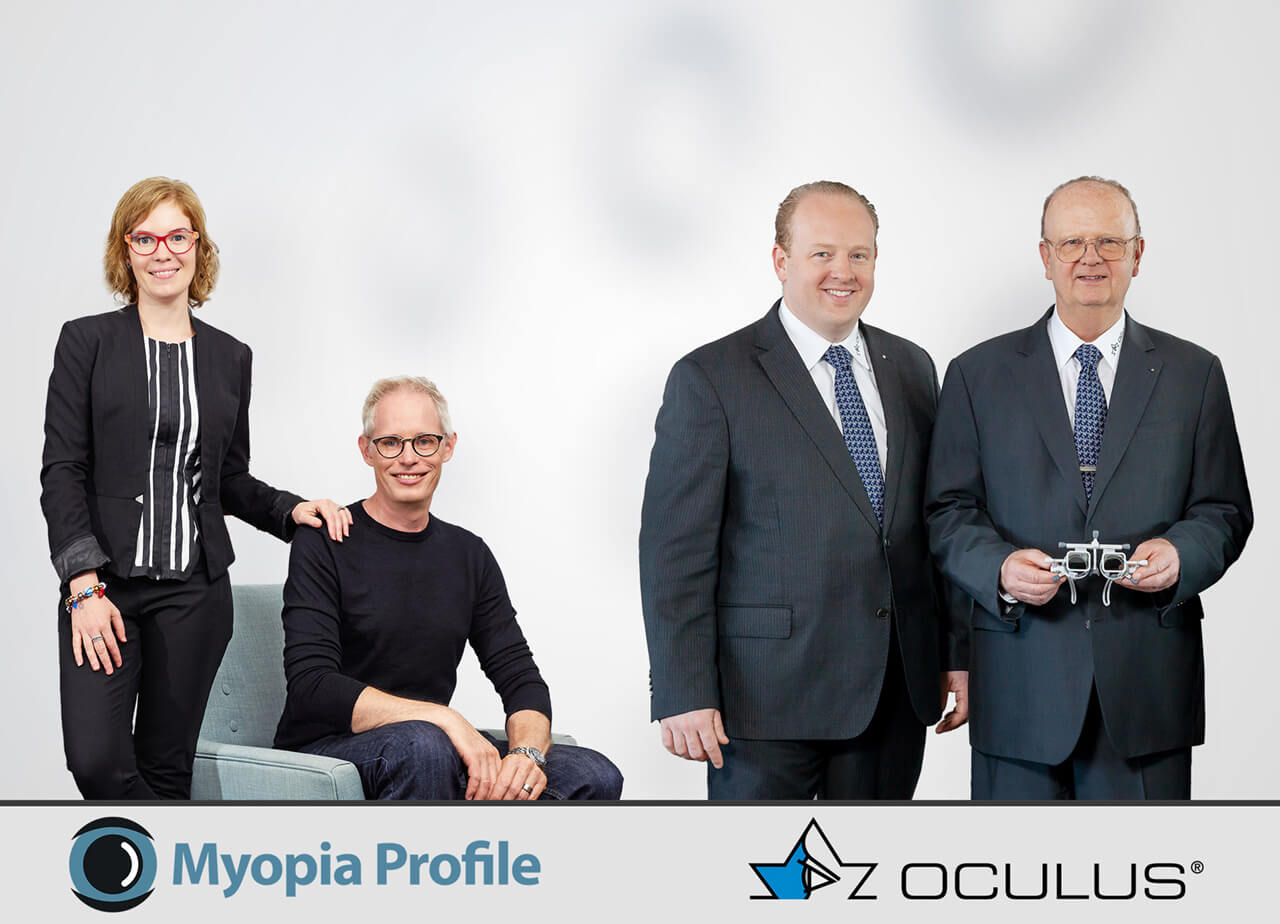
CEOs Kate and Paul Gifford of Myopia Profile and CEOs Christian and Rainer Kirchhübel of OCULUS
Cooperation between OCULUS and Myopia Profile
OCULUS and Myopia Profile, the world's largest and most popular myopia educational platform, have commenced a partnership to increase eye care practitioners' knowledge and clinical confidence in measurement and interpretation of axial length in myopia. Specific educational content, research summaries and case studies have been developed, which can be viewed on MyopiaProfile.com.
Cooperation between OCULUS and BHVI
OCULUS and BHVI (Brien Holden Vision Institute) are pleased to announce an agreement that will see OCULUS incorporate BHVI’s algorithms for tracking and estimating refractive error into its Myopia Master® ophthalmic instruments developed for the management of myopia. Learn more about BHVI’s research: www.bhvi.org, www.globalmyopiacentre.org






